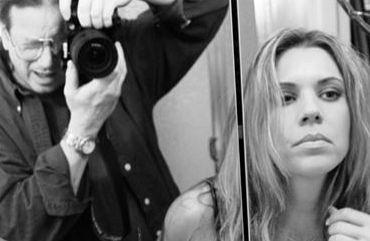The notion that women can become great photographers comes as no surprise to people who live in a world where Annie Leibovitz is perhaps the most famous photographer in the world. But the fact is that there have always seemed to be many more successful male photographers than female. This was also true in the mid-19th century when wet-plate photography was complicated, cumbersome and required a lot of physical labor. This was not considered seemly activity for women in the Victorian Era.
[caption id="attachment_3620" align="aligncenter" width="519"]
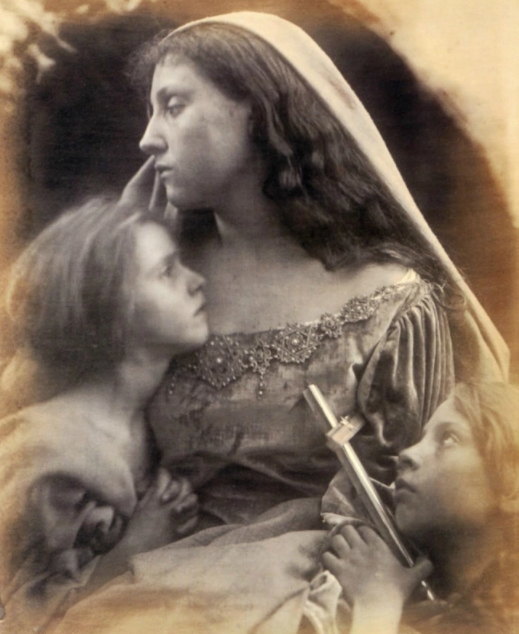
Julia Margaret Cameron preferred historic, literary and historic them to straight portrait photography. Credit: Julia Margaret Cameron[/caption]
But one exception to this was
Julia Margaret Cameron, who is considered one of the great portrait photographers of the day. Like many early photographers, Cameron was largely forgotten after her death until before being rediscovered after 80 years in 1948 by the historian Helmut Gernsheim (1913-95) who published Julia
Margaret Cameron. Her lLife and Photographic Work.
Her impact as a portraitist is even more remarkable because she didn’t take up photography until age 48 and was only a practicing photographer for 11 years. (But, then, Vincent Van Gogh was only a painter for 10 years – and look what he accomplished.)
[caption id="attachment_3621" align="aligncenter" width="481"]
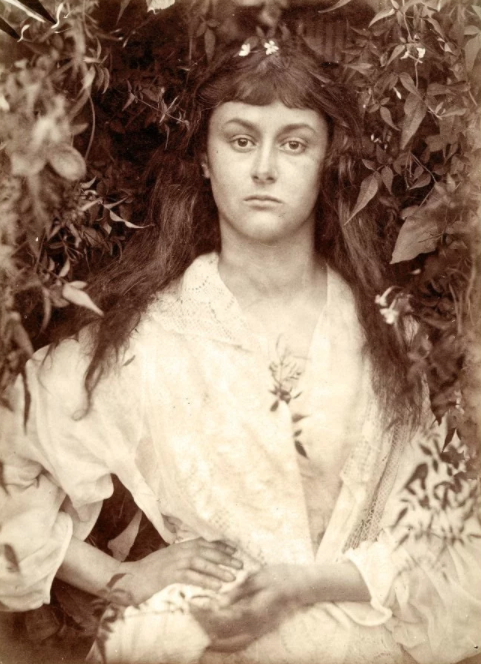
Credit: Julia Margaret Cameron[/caption]
[caption id="attachment_3623" align="aligncenter" width="371"]
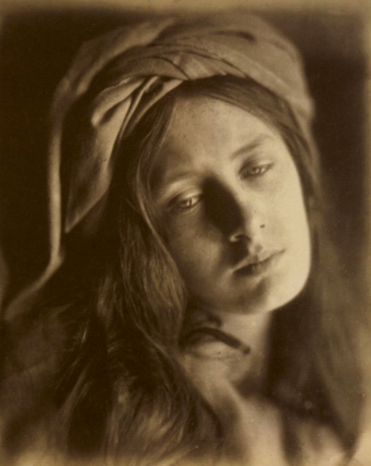
Credit: Julia Margaret Cameron[/caption]
Julia Margaret Cameron was born in Calcutta, India in 1815, married and moved to London in 1848. She moved in a social circle in which she was surrounded by famous scientists, writers, poets and painters of the day. Her daughter gave her a camera in 1863 and despite knowing nothing about photography took to it right away and threw herself into learning everything possible about using a camera, exposure and developing
wet-colodian photographic glass plates.
Her photos have been compared to Renaissance art embodying deeply spiritual values and many of the values associated with womanhood by Victorian culture, like innocence, piety, and virtue. She shot many images involving the use of costumes and theatrical sets and was an early practitioner of
Pictorialism, which involved using various techniques like soft focus to make a straightforward photo look more “artistic.” Photographer continued using this approach to try and make photography into what they thought was fine art well into the 20th century and the work of shooters with a hyper-realistic style like Ansel Adams and Edward Weston.
[caption id="attachment_3625" align="aligncenter" width="488"]
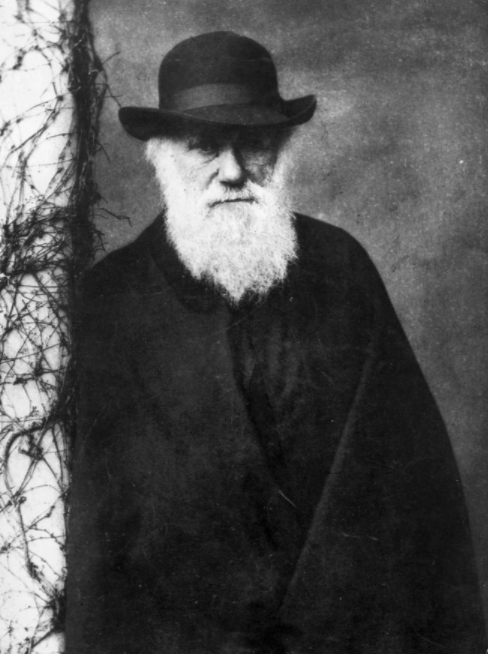
Cameron travel in social circles that included artists, poets, writers and scientists. This, for example, is the legendary Charles Darwin. Credit: Julia Margaret Cameron[/caption]
Cameron was never a commercial portrait photographer, pursued her aesthetic interests and which involved to focusing on various artistic and historic themes. But she did market her prints and sold 80 of them to the
Victoria and Albert Museum. Her photos were never examples of perfect technical excellence and were criticized as being slovenly and full of mistakes, and she found more acceptance among
pre-Raphaelite artists than among photographers. However, in terms of artistic expression, she is considered an important pioneer in the development of Victorian photography and had an important influence on the photographers of her time and those to come.
[caption id="attachment_3627" align="aligncenter" width="427"]
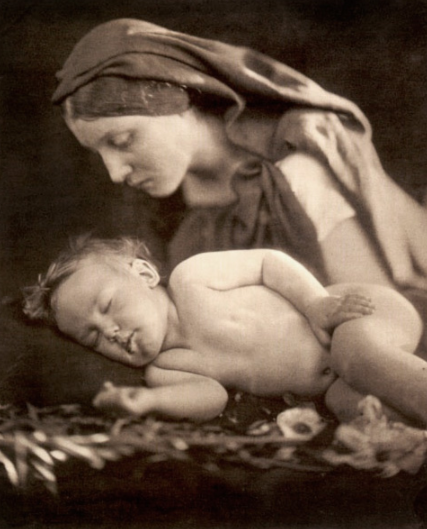
Cameron adopted a style known as pre-Raphaelite, a group that consciously sought to emulate the simplicity and sincerity of the work of Italian artists from before the time of Raphael. Credit: Julia Margaret Cameron[/caption]
And she certainly made it clear in time before the abilities of women were widely accepted and females couldn’t even vote that women could be great photographers.
Bill Dobbins is a pro photographer located in the Westwood area of Los Angeles. He is a veteran photographer and videographer who has published eight books, including two fine art photo books:
WEBSITES
[caption id="attachment_3624" align="aligncenter" width="519"]
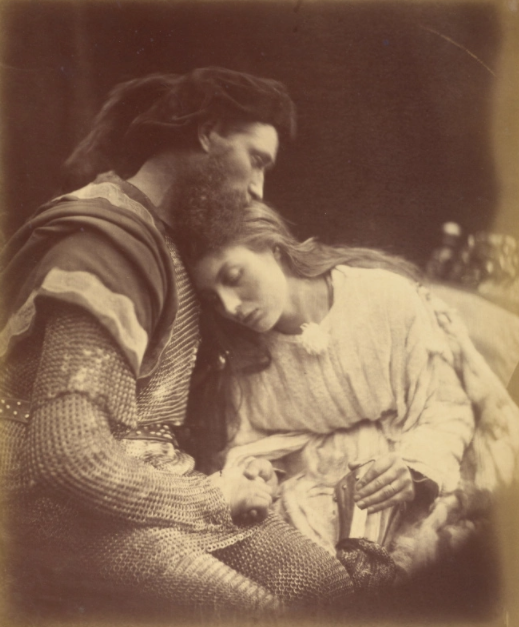
Credit: Julia Margaret Cameron[/caption]
[caption id="attachment_3622" align="aligncenter" width="519"]
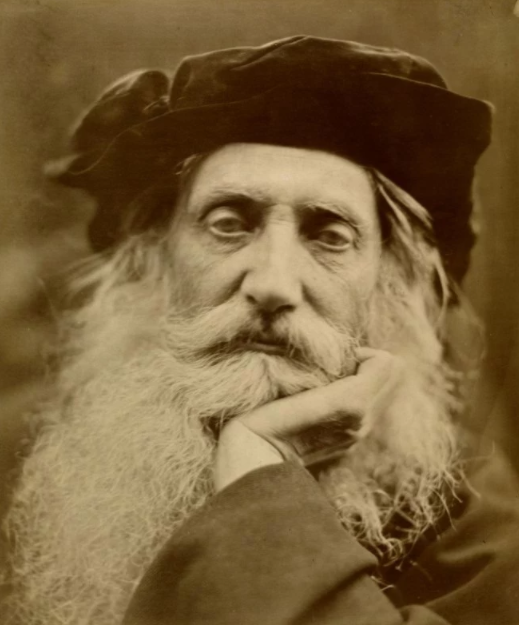
Credit: Julia Margaret Cameron[/caption]
[caption id="attachment_3628" align="aligncenter" width="491"]
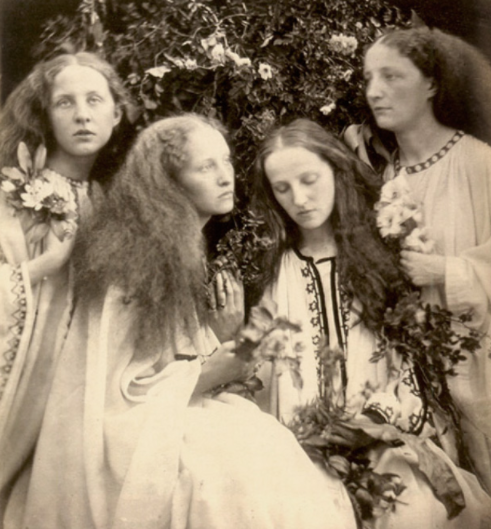
Credit: Julia Margaret Cameron[/caption]
 Julia Margaret Cameron preferred historic, literary and historic them to straight portrait photography. Credit: Julia Margaret Cameron[/caption]
But one exception to this was Julia Margaret Cameron, who is considered one of the great portrait photographers of the day. Like many early photographers, Cameron was largely forgotten after her death until before being rediscovered after 80 years in 1948 by the historian Helmut Gernsheim (1913-95) who published Julia Margaret Cameron. Her lLife and Photographic Work.
Her impact as a portraitist is even more remarkable because she didn’t take up photography until age 48 and was only a practicing photographer for 11 years. (But, then, Vincent Van Gogh was only a painter for 10 years – and look what he accomplished.)
[caption id="attachment_3621" align="aligncenter" width="481"]
Julia Margaret Cameron preferred historic, literary and historic them to straight portrait photography. Credit: Julia Margaret Cameron[/caption]
But one exception to this was Julia Margaret Cameron, who is considered one of the great portrait photographers of the day. Like many early photographers, Cameron was largely forgotten after her death until before being rediscovered after 80 years in 1948 by the historian Helmut Gernsheim (1913-95) who published Julia Margaret Cameron. Her lLife and Photographic Work.
Her impact as a portraitist is even more remarkable because she didn’t take up photography until age 48 and was only a practicing photographer for 11 years. (But, then, Vincent Van Gogh was only a painter for 10 years – and look what he accomplished.)
[caption id="attachment_3621" align="aligncenter" width="481"] Credit: Julia Margaret Cameron[/caption]
[caption id="attachment_3623" align="aligncenter" width="371"]
Credit: Julia Margaret Cameron[/caption]
[caption id="attachment_3623" align="aligncenter" width="371"] Credit: Julia Margaret Cameron[/caption]
Julia Margaret Cameron was born in Calcutta, India in 1815, married and moved to London in 1848. She moved in a social circle in which she was surrounded by famous scientists, writers, poets and painters of the day. Her daughter gave her a camera in 1863 and despite knowing nothing about photography took to it right away and threw herself into learning everything possible about using a camera, exposure and developing wet-colodian photographic glass plates.
Her photos have been compared to Renaissance art embodying deeply spiritual values and many of the values associated with womanhood by Victorian culture, like innocence, piety, and virtue. She shot many images involving the use of costumes and theatrical sets and was an early practitioner of Pictorialism, which involved using various techniques like soft focus to make a straightforward photo look more “artistic.” Photographer continued using this approach to try and make photography into what they thought was fine art well into the 20th century and the work of shooters with a hyper-realistic style like Ansel Adams and Edward Weston.
[caption id="attachment_3625" align="aligncenter" width="488"]
Credit: Julia Margaret Cameron[/caption]
Julia Margaret Cameron was born in Calcutta, India in 1815, married and moved to London in 1848. She moved in a social circle in which she was surrounded by famous scientists, writers, poets and painters of the day. Her daughter gave her a camera in 1863 and despite knowing nothing about photography took to it right away and threw herself into learning everything possible about using a camera, exposure and developing wet-colodian photographic glass plates.
Her photos have been compared to Renaissance art embodying deeply spiritual values and many of the values associated with womanhood by Victorian culture, like innocence, piety, and virtue. She shot many images involving the use of costumes and theatrical sets and was an early practitioner of Pictorialism, which involved using various techniques like soft focus to make a straightforward photo look more “artistic.” Photographer continued using this approach to try and make photography into what they thought was fine art well into the 20th century and the work of shooters with a hyper-realistic style like Ansel Adams and Edward Weston.
[caption id="attachment_3625" align="aligncenter" width="488"] Cameron travel in social circles that included artists, poets, writers and scientists. This, for example, is the legendary Charles Darwin. Credit: Julia Margaret Cameron[/caption]
Cameron was never a commercial portrait photographer, pursued her aesthetic interests and which involved to focusing on various artistic and historic themes. But she did market her prints and sold 80 of them to the Victoria and Albert Museum. Her photos were never examples of perfect technical excellence and were criticized as being slovenly and full of mistakes, and she found more acceptance among pre-Raphaelite artists than among photographers. However, in terms of artistic expression, she is considered an important pioneer in the development of Victorian photography and had an important influence on the photographers of her time and those to come.
[caption id="attachment_3627" align="aligncenter" width="427"]
Cameron travel in social circles that included artists, poets, writers and scientists. This, for example, is the legendary Charles Darwin. Credit: Julia Margaret Cameron[/caption]
Cameron was never a commercial portrait photographer, pursued her aesthetic interests and which involved to focusing on various artistic and historic themes. But she did market her prints and sold 80 of them to the Victoria and Albert Museum. Her photos were never examples of perfect technical excellence and were criticized as being slovenly and full of mistakes, and she found more acceptance among pre-Raphaelite artists than among photographers. However, in terms of artistic expression, she is considered an important pioneer in the development of Victorian photography and had an important influence on the photographers of her time and those to come.
[caption id="attachment_3627" align="aligncenter" width="427"] Cameron adopted a style known as pre-Raphaelite, a group that consciously sought to emulate the simplicity and sincerity of the work of Italian artists from before the time of Raphael. Credit: Julia Margaret Cameron[/caption]
And she certainly made it clear in time before the abilities of women were widely accepted and females couldn’t even vote that women could be great photographers.
Cameron adopted a style known as pre-Raphaelite, a group that consciously sought to emulate the simplicity and sincerity of the work of Italian artists from before the time of Raphael. Credit: Julia Margaret Cameron[/caption]
And she certainly made it clear in time before the abilities of women were widely accepted and females couldn’t even vote that women could be great photographers.
 Credit: Julia Margaret Cameron[/caption]
[caption id="attachment_3622" align="aligncenter" width="519"]
Credit: Julia Margaret Cameron[/caption]
[caption id="attachment_3622" align="aligncenter" width="519"] Credit: Julia Margaret Cameron[/caption]
[caption id="attachment_3628" align="aligncenter" width="491"]
Credit: Julia Margaret Cameron[/caption]
[caption id="attachment_3628" align="aligncenter" width="491"] Credit: Julia Margaret Cameron[/caption]
Credit: Julia Margaret Cameron[/caption]





